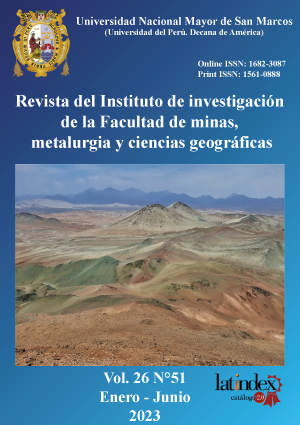Case study: drilling rig inoperability due to loud noise complaint
DOI:
https://doi.org/10.15381/iigeo.v26i51.23701Keywords:
Noise measurement, hearing, hearing conservation, monitoring, noise, drilling, GES, GHEAbstract
The case study describes an industrial hygiene investigation initiated in response to a drilling rig down due to complaints of loud noise, workers decide to shut down one of three drilling rigs (P3: Drill 3) due to loud noise. It begins with the requirement of situational investigation of exposure to noise of the drilling workers in order to identify and evaluate the exposure to noise, for this the industrial hygienist performs a series of noise dosimetry detection, which aims to declare the results as acceptable or unacceptable based on current regulations, identify the characteristics of the noise sources under study and propose control measures in accordance with the fundamentals, communicate the fundamentals and controls to the workers and management. The study population is made up of drilling rig operators exposed to noise, population is 10 and the sample is 11, the methodology used for the selection of the sample is NIOSH 77-173. The results were analyzed under the UCL, obtaining as results an acceptable noise exposure profile and below the Maximum Permissible Limit. And it is obtained that, of the three drillers coded as P1: Driller 1, P2: Driller 2 and P3: Driller 3, the latter (paralyzed Driller) is the noisiest among the evaluating teams, however it does not generate a quantitative subdivision of the Group. of Similar Exposure (GES).
Downloads
Published
Issue
Section
License
Copyright (c) 2023 Hermes Jilmer Cano Arratea

This work is licensed under a Creative Commons Attribution 4.0 International License.
AUTHORS RETAIN THEIR RIGHTS:
a. Authors retain their trade mark rights and patent, and also on any process or procedure described in the article.
b. Authors retain their right to share, copy, distribute, perform and publicly communicate their article (eg, to place their article in an institutional repository or publish it in a book), with an acknowledgment of its initial publication in the Rev. Inst. investig. Fac. minas metal cienc. geogr.
c. Authors retain theirs right to make a subsequent publication of their work, to use the article or any part thereof (eg a compilation of his papers, lecture notes, thesis, or a book), always indicating the source of publication (the originator of the work, journal, volume, number and date).























